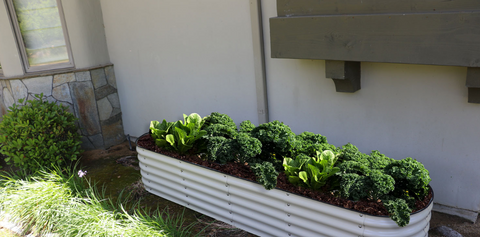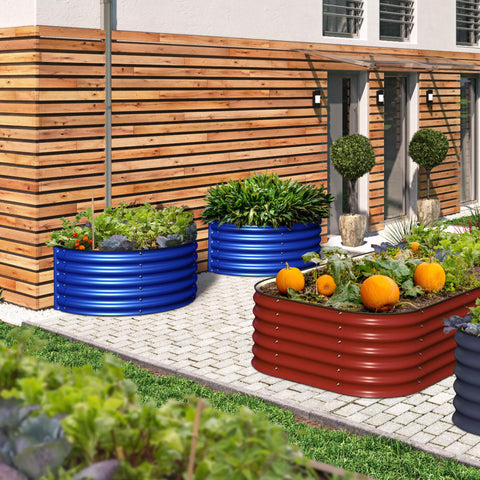Do You Need To Farm Under The Raised Garden Bed?
When deciding to use a raised garden bed, many considerations should be kept in mind, one of which is the ground under the garden bed. If you plan to put the raised garden bed on the soil, do you need to cultivate the existing soil first?
In most cases, you do not need to cultivate soil under the raised garden bed. However, you may need to prepare the ground by weeding and removing rocks. In this process, you may eventually excavate the soil, depending on the preparation method and the current state of the soil.

In this article, we will study in more detail how you should prepare the ground under the raised garden bed. We will also study why commercial agriculture and family gardens are generally not recommended for farming.
Prepare the floor for the raised garden bed
Although you can build a raised garden bed on most types of surfaces, including concrete and table top, if you build a bed on the ground, you must take some additional steps.
This is because if the ground is properly prepared, the roots of plants will have additional growth space, which is good for deep-rooted crops. They will also be able to obtain underground nutrients, not just rely on soil additives.
You can prepare the ground for the raised garden bed in many ways. However, the two most common methods of land preparation are no digging and low tillage.
The following is a more in-depth review of each method.
No digging
The no-digging method is exactly what it sounds like - a method of preparing land without digging or farming. This is a labor-saving method, which is good for your back, but it requires that the soil is conducive to plant growth. If this is the case, the main problem you may face is that grass and weeds prevent you from building a raised garden bed.
Here is how to prepare the area where the bed is placed:
- Cut or trim weeds and grass as much as possible.
- If there is grass in this area, please cover it with organic fertilizer and lime.
- Cover the area with organic shading materials. Generally speaking, newspapers do well. Make sure to overlap with the newspaper to prevent weeds or grass from sliding out of the cracks.
- Newspapers (or other shading materials) will suffocate grass and weeds. The material should be organic, so it will decompose with time. If you don't have a newspaper, please consider using cardboard.
- Add a layer of compost as the growth medium. This should be very thick, about 4-6 inches (10.16-15.24 cm).

You can now start building a raised garden bed on the compost. When the root is long enough to reach the ground, the shading material will decompose and the compost will become a part of the ground soil.
Low tillage
Low tillage methods include digging the soil and some tillage. This method is used when the soil is not conducive to plant growth, such as when the soil is highly compacted or filled with rocks and stones.
For this method, you should:
- Cut or cut grass and weeds.
- Completely dig out the grass and weeds.
- Excavate the top layer of soil to remove grass and weed seeds that may affect the raised garden bed. This also makes it easier to see which rocks and rocks block the soil.
- Save the top layer.
- Remove the stones and stones you find. If there are obvious plant debris (such as large stumps), they should also be removed.
- Slightly loosen the soil with a shovel. Don't dig too much - you won't cultivate the soil as thoroughly as traditional gardening.
- Add compost organics to the soil. You can use manure, compost or a mixture of both.
- Place the top layer on the new organic layer and gently mix the two.
Although this method does require a small amount of cultivation, its strength on the ground is far lower than that of mechanical methods such as rotary machines. Unlike traditional farming methods, you do not have to repeat the process every year. As long as the soil is not compacted, the initial low tillage will last for several years (if lucky, it can last for a lifetime) without repetition.
Why farming is not good
Most people who provide suggestions on building raised garden beds or even traditional underground gardens will advise not to cultivate unless there is no other choice.
This is because, although farming has long been regarded as the best way to lay the foundation for agriculture and gardening, more and more evidence shows that farming is harmful to the soil and environment.
The following are the specific reasons why farming is not recommended:
- Contrary to popular belief, farming will destroy the soil structure and actually increase the risk of soil compaction rather than aerate the soil.
- The destruction of soil structure also makes the soil more loose and vulnerable to erosion. If you live in an area with heavy rain and strong wind, the problem will worsen.
- In some cases, cultivation can expose dormant weed seeds to ideal growth conditions, promoting more weed growth rather than destroying it.
- Tillage can destroy organic matter in soil, including microorganisms. Although soil fertility will increase in the short term, it will be destroyed by microbial loss in the long term.

Farming is also labor-intensive, even if you have a rotary tiller. This is an inconvenient and often painful choice for people with mobility difficulties and back problems. Unless there is no alternative, it is best to avoid disturbing the soil.
That is to say, light tillage is required in some cases. For example, when the soil is too compact and requires light, or when there are many rocks that hinder the effective growth of plants. Ultimately, whether you need to cultivate depends on the condition of the soil you are using.
You do not have to cultivate the ground under the raised garden bed, unless there are debris and rocks that will hinder the growth of plant roots.
